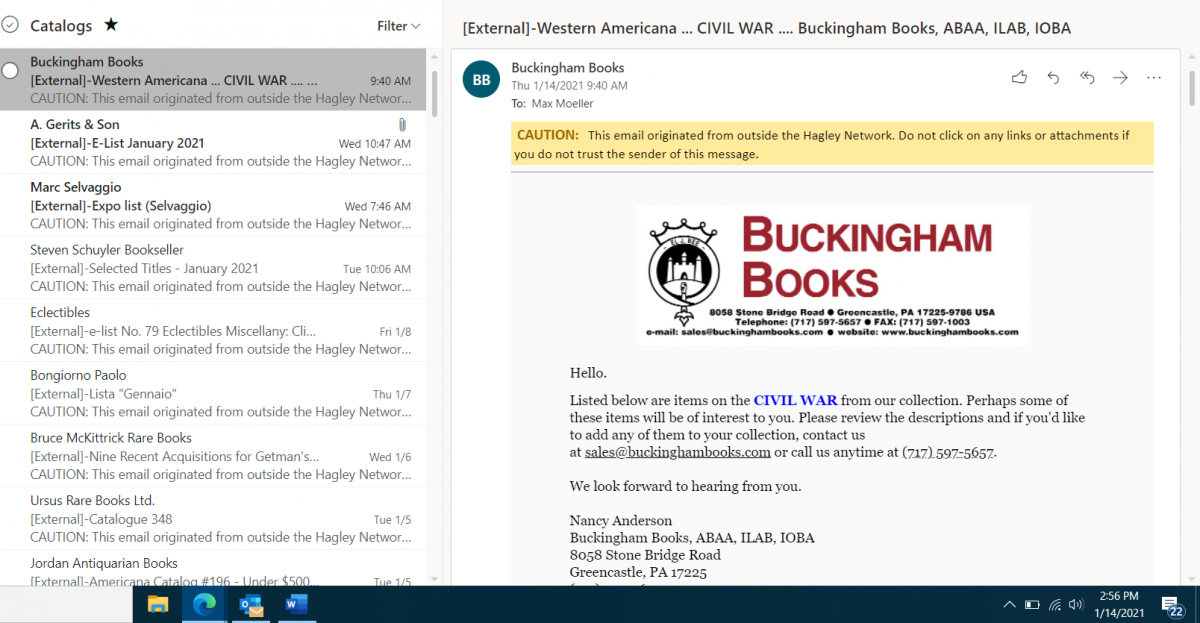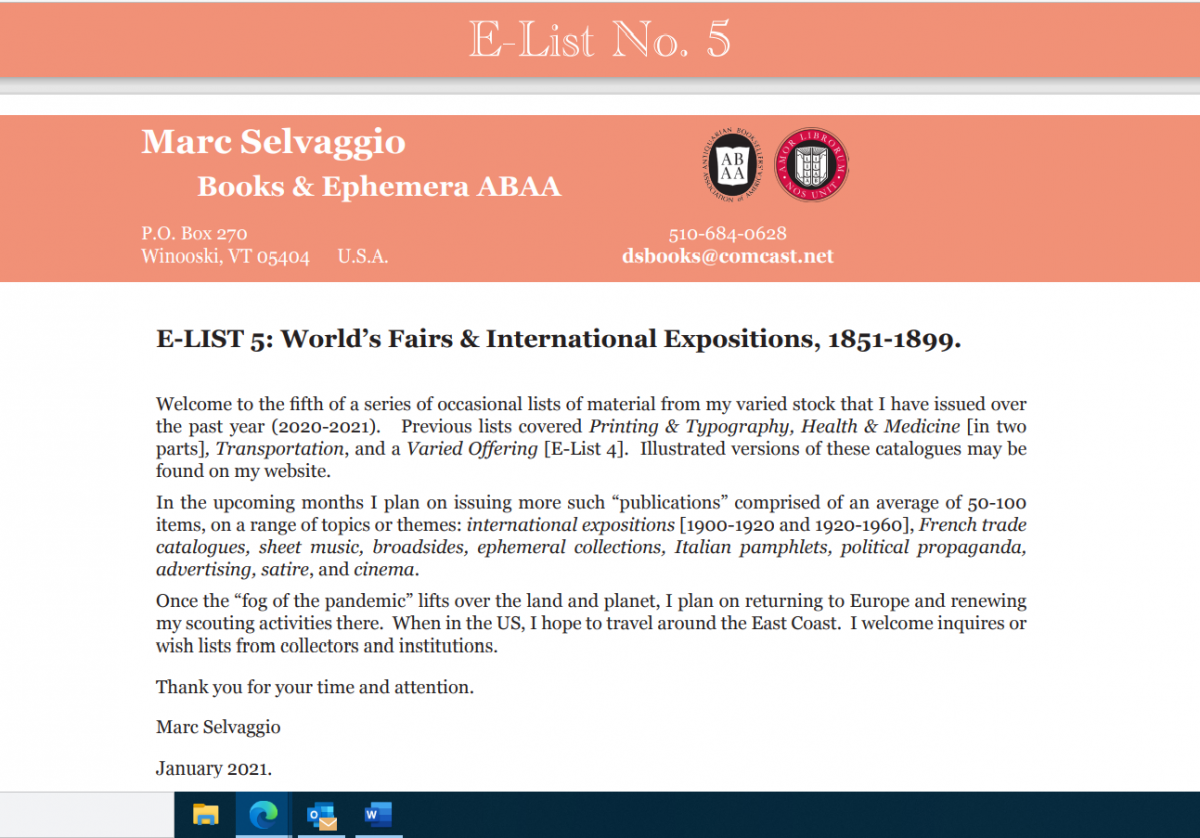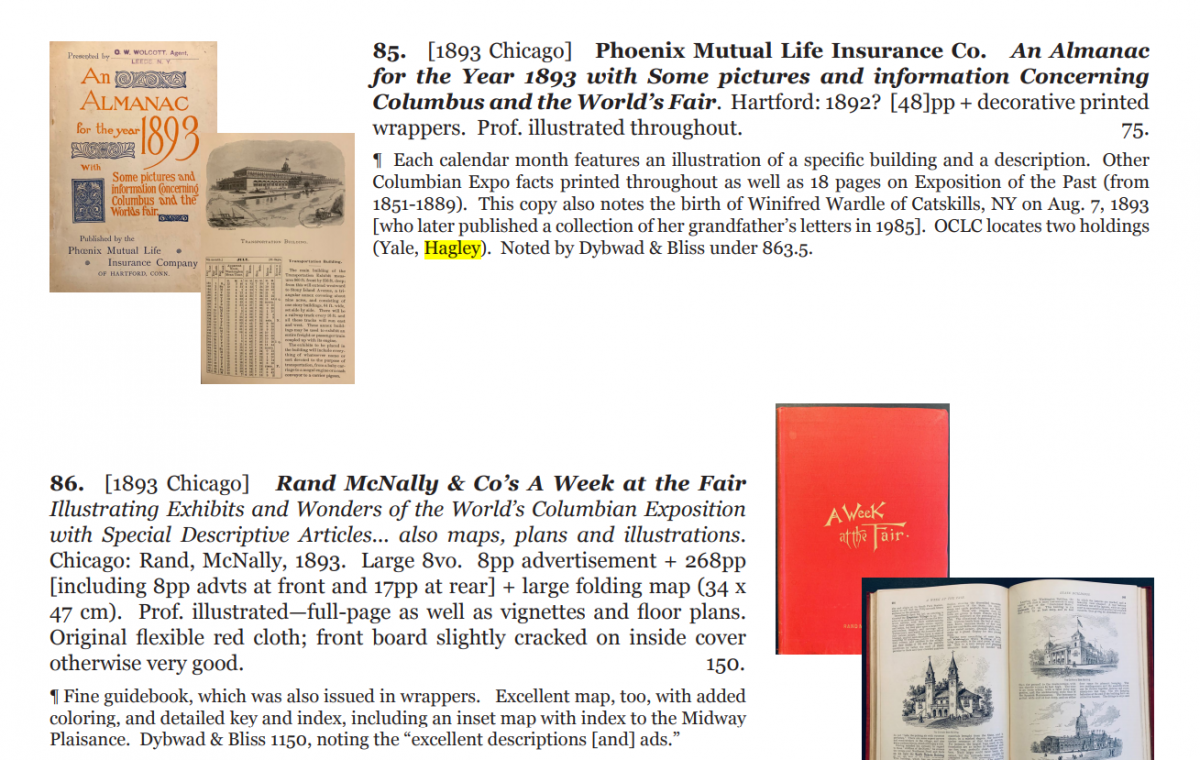Shopping for books and other publications is one of the most fun aspects of my job as Curator for Published Collections. Physical catalogs from booksellers used to arrive in the mail daily. Inevitably the bulk of these catalogs would get out of control, and they would end up piled precariously on my desk. Nowadays, digital versions are constantly arriving in my email inbox instead.

In practice, purchasing from these bookseller catalogs is a strange procedure, quite different in intensity from the typical use of a mail-order catalog. The first time I tried to do this at work (a long time ago), I spent two days carefully reading my chosen catalog. I compared the offerings to our library holdings, thoughtfully made my selections, and deliberated about how much money I could spend. When I finally contacted the bookseller, I was informed that all of the items I requested had already been sold. I was floored and realized that my procedure was all wrong. To successfully purchase items you want, you must drop everything when the email arrives, skim the catalog, hastily confirm your library holdings, and contact the bookseller as fast as humanly possible...ideally within five minutes of receiving the email. Then you must not take it personally when you still lose out to other customers on sales.

Booksellers produce these catalogs to make customers aware of the rare or unique items they have for sale. At a minimum, each entry in a catalog will typically provide basic bibliographic information, a description of the item’s physical condition, and a price. But to increase the appeal, booksellers will frequently add other information to influence prospective customers. For instance, photographs are often provided to show off the visual appeal of an item. Also, booksellers often provide historical context for the item in order to write a compelling, occasionally hyperbolic, description of an item’s importance. Finally, for their customers’ convenience, booksellers will also often check to see if an item is listed in OCLC’s WorldCat. Providing a reference to this world catalog gives the customer a sense of how rare an item is since it lists how many copies are held in library collections across the world. The thinking goes that if there are three copies in WorldCat and another is listed for sale, perhaps the cost is worth paying to add such an exclusive item to your own library collection.

So much for the immediate use of bookseller catalogs. Over time I have learned that they can be useful in other ways. Booksellers engage in a considerable amount of research to produce their catalogs, and that information can still be helpful long after the publications listed therein are sold. It is a shame to let such compiled information go to waste.
For instance, some editions of bookseller catalogs are thematically arranged. I retain such catalogs, especially if they pertain to a known strength in Hagley’s collections. Some entire catalogs are filled with Trade Catalogs arranged by subject. Others may contain publications arranged chronologically by all the World’s Fairs held since 1851. The full content of such catalogs becomes valuable as an informal survey or overview of the existing literature.
On those occasions when I do miss out on a sale, I don’t cry or lash out in anger. Instead, I retain a wish list of the catalog entries and follow up on them later. I’m an optimist, so I tell myself that patience will be rewarded when other copies show up for sale on the market. Retaining the information produced in these bookseller catalogs is a great way to keep the titles handy for future searches online, hopefully leading to an eventual acquisition.
Finally, the most rewarding use of bookseller catalogs, from my perspective, is to celebrate the items I most definitely will not buy...and those are items already noted as being held by Hagley.

Such entries can be of great use to me as a librarian. Hagley Library holds almost 300,000 printed and published items. Try as I may, I can never learn about all of them while browsing the stacks. Bookseller catalogs provide a short cut and frequently make me aware of publications already residing happily on our shelves. The bookseller catalog entries also provide a wealth of information, saving me from spending the time and effort to duplicate that level of detective work. This furthers my subject knowledge and helps me to create better presentations or exhibits of our library holdings when needed.
So, I want to take this opportunity to say thank you, booksellers. Your hard work is appreciated!
Max Moeller is the Curator of Published Collections at Hagley Museum and Library.
